Breaking new ground along with gender barriers, India has seen many pioneering women biologists who have stepped out to explore and help resolve key issues of biodiversity and wildlife. Women in the Wild, edited by Anita Mani, narrates the journeys of some of India’s women biologists working in wildlife and conservation. Blending a love of their subject, a keen and sensitive awareness of how people and natural spaces are intertwined, and a curiosity about fundamental questions of our world, women biologists are increasing in the once male-only space of field biology, says Usha Rai as she provides us a lovely summary of the book
At a time when the ascendency of women is being celebrated with the role of women scientists in the Chandrayaan Mission, the introduction of the Women’s Reservation Bill in Parliament and the array of medals that Indian women have brought home from the Asian Games, the book, Women in the Wild, throws light on some remarkable achievements done by some of women wildlife biologists. The book throws light on their struggles in the remotest corners of the country.
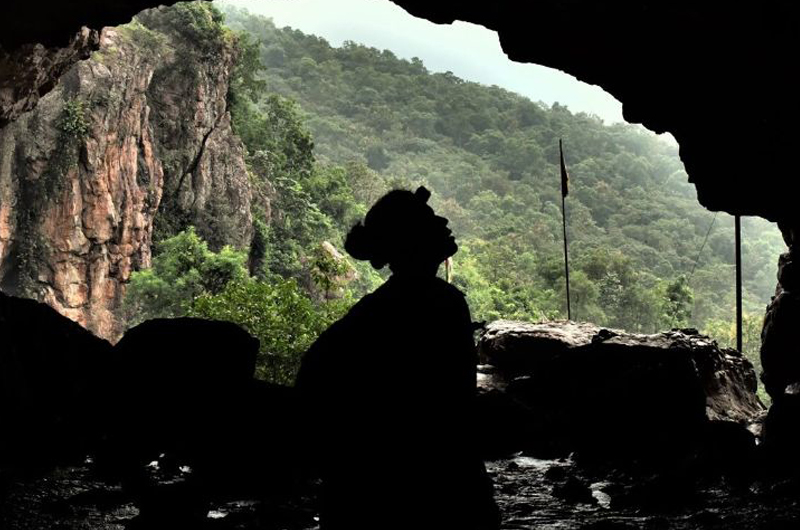
Published by Juggernaut, editor Anita Mani points out that field biology as a discipline attracted few women until the 1980s. The Wildlife Institute of India and The Salim Ali School of Ecology and Environmental Sciences, affiliated with Pondicherry University, were among the first to open their doors to women for postgraduate programmes in wildlife science. Eminent writers, many of them environmentalists themselves, have portrayed the trials and triumphs of these pioneering women wildlife biologists, in this book.
Pioneers and pathbreakers
Jamal Ara, considered as India’s first woman ornithologist, had no formal academic education in wildlife biology but taught herself in the field. As Raza Kazmi, who has written the chapter about her, points out, unlike the ornithologists of her era, this first lady of Indian ornithology did not come from a royal background or a merchant background. She was an educated Muslim woman, travelling, working, and excelling all on her own. From the Chota Nagpur plateau of today’s Jharkhand, her work on the ornithology of the plateau remains the only comprehensive study of birds of the region. Both Salim Ali and Zafar Futehally, pioneering naturalists and ornithologists, who corresponded with her regularly, held her in high esteem.

Jamal Ara wrote prolifically from 1949 to 1988. Her first paper in the Bombay Natural History Society Journal in 1949 was on the wildlife reserves of Bihar. There were more than 60 papers and popular articles in her name, including a booklet for children on birds, published by the National Book Trust in 1970. She also gave regular talks on All India Radio on the vanishing birds and animals of Bihar. Then she disappeared from the scene of Indian ornithology. But her bird book for children, in its 13th edition, continues to regale kids. There is a beautiful garden in her home in Ranchi where, her daughter points out, most of her bird observations were made. This is the centenary year of her birth and the lead article on her in Women in the Wild is a fitting tribute to the country’s first ‘bird woman’.
Particularly moving is the story of ‘turtle girl’, J. Vijaya, poignantly narrated by Zia Whitaker, daughter of renowned ornithologist Zafar Futehally and a founder of the Madras Crocodile Bank. Vijaya led a brief but rich life conserving India’s freshwater turtles and, in the process, rediscovering the Cochin forest cane turtle. Also profiled is the work of Ayushi Jain, a young biologist from Uttar Pradesh, who has been conserving the critically endangered Cantor’s giant softshell turtle in Kasargod district of Kerala. With community support, she hopes to revive the turtle and its habitat and ensure co-existence with humans. The planet has lost more than 80 per cent of its freshwater aquatic life and a third of its wetlands since 1970. More than 50 per cent of the world’s freshwater turtles, like the Cantor’s giant softshell turtle, are on the verge of extinction.
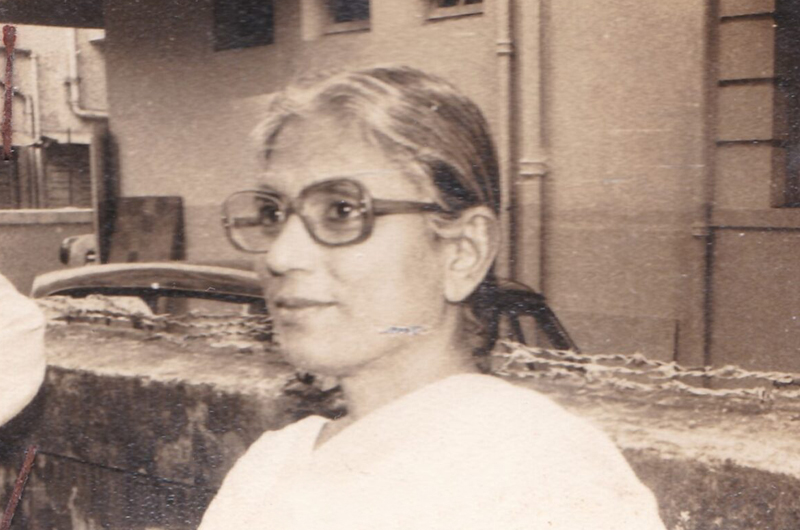
Wildcards and wildcats
Vidya Athreya was one of the first women in India to conduct long-term research on big cats using radio collars. At the time of writing Athreya’s story on unlocking the secret lives of leopards, Ananda Banerjee found she had collared 11 leopards and one tiger. It was only after her collaring of the leopards and other wildlife that the scientific community started believing that leopards do live in human-dominated landscapes. Athreya points out, “In a country where people and their livestock are everywhere, wild animals do not understand borders, or whether an area is a sanctuary or not.” In the early 2000s, while working in Nashik and Pune Districts of Maharashtra, she found leopards and hyenas in well-irrigated areas. Before irrigation reached, wolves lived in these dry, arid areas. Athreya’s studies showed that substantial populations of leopards, hyenas, jackals, wolves, jungle cats and foxes lived in rural habitations and their diet included domestic animals and rodents.
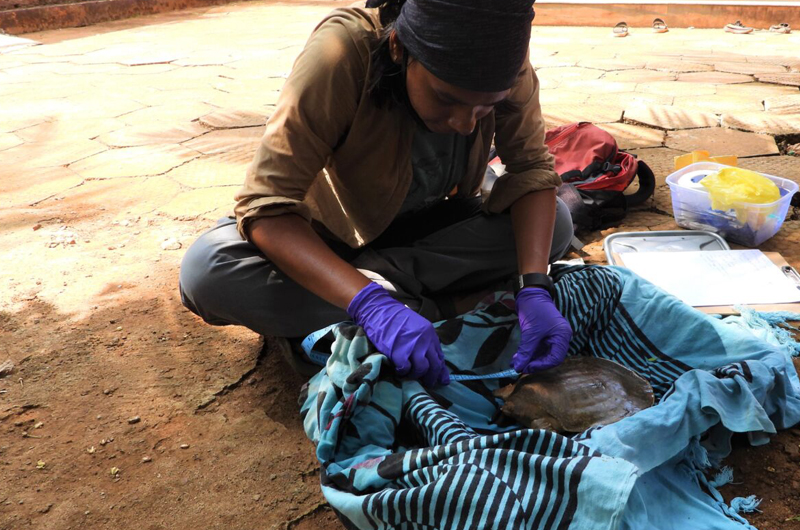
Trapping leopards and relocating them to forest areas does not work. With great homing instincts, they return to the area they have been moved from. This was proved by radio-collaring a large old leopard called Ajoba, rescued from a well near Pune and released in a forested area. Ajoba travelled 120 km to return to Sanjay Gandhi National Park (SGNP), Mumbai, which was believed to have been home.
Though not all farmers are comfortable with leopards, they accept them. In 2011, after several encounters between humans and leopards around SGNP, its field director started the Mumbaikars for SGNP project to generate awareness of human-leopard interactions. Athreya collared leopards and opened doors for understanding them. The leopard population went up from 22 to 47 in 2018. Athreya collaborated with journalists and the articles written changed public perception of the big cat. A Marathi film was made on the collared cat Ajoba with Urmila Matondkar playing the role of Athreya.
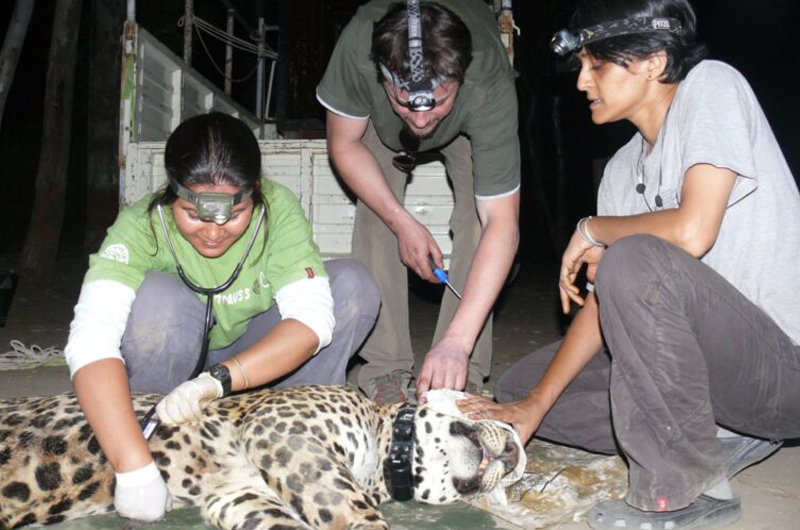
Uma Ramakrishnan, a scientist, molecular ecologist and wildlife detective, has specialised in the study of scat, especially that of the tiger. In the world of wildlife biologists ‘turd’ is a treasure, almost like gold, she maintains. Professor of ecology and evolution with the National Centre for Biological Sciences, Bengaluru, she travels thousands of kilometers through forests and protected areas to collect and analyse the biological material tigers leave in faecal matter, hair scrapped from scratch marks on trees, and even traces of saliva, retrieved from a prey. It enables her to understand the ecology of endangered species.
Wild animals live secretive lives and are shy. Observing the rarely-sighted pangolin is difficult, and so is counting tigers whose movements are camouflaged. Poop is one way of researching and knowing the big cat. Like blood, scat contains DNA that scientists study. In addition to clues about the individual identity of a tiger, genetic material tells you where the tiger is from, what it is eating, whether it is healthy, how fast it travels, and its mating patterns. For her Masters at Pune University, Uma worked for a year in elephant scientist R. Sukumar’s laboratory. Her fieldwork took her to Periyar Tiger Reserve, Kerala, where she investigated if being tuskless impacted their reproduction. Was being makhna (tuskless) a disadvantage as far as the opposite sex was concerned?
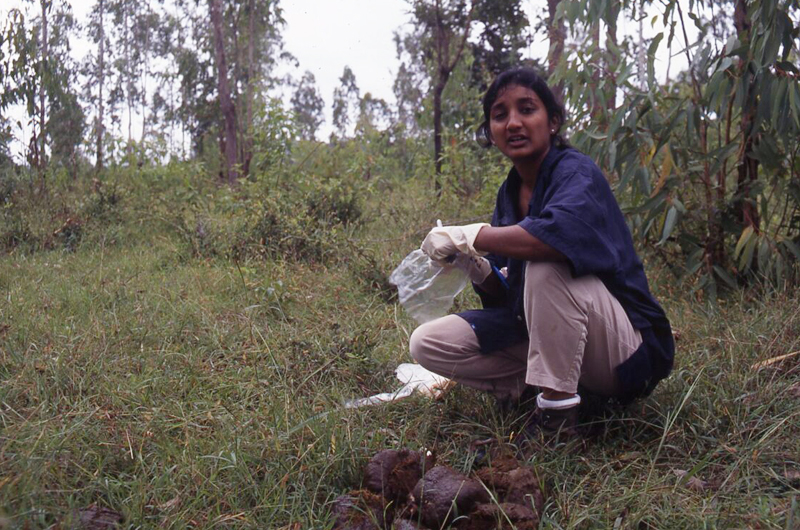
Since Indian tiger reserves are modest in size and isolated, Uma wanted to understand what was happening with wild tigers. Along with PhD student Prachi Thatte, she mapped the genetic landscape of Indian tigers in protected areas to figure out if they are genetically distinct or mixed. She found the intermingling of tiger populations in different reserves in Central India though connectivity was impeded by heavy traffic and pockets of human population. Presented as evidence in the Supreme Court, it led to the provision of an underpass that enabled the movement of wildlife between Kanha and Pench Tiger Reserves. In Ranthambhore Tiger Reserve, lack of connectivity was leading to inbreeding in the tiger population. In Odisha’s Similipal, pseudo-melanism was traced to a single mutation in the genome of unusually high frequency. With the broad stripes of the tigers spreading into the pelt, the Odisha tigers were often referred to as black tigers. Prolonged isolation from tigers in other reserves had caused the cats to change their stripes. Since the closest population of tigers is about 800 km from Similipal, Ramakrishnan predicts all tigers of Similipal could become black. Her path-breaking work on tigers has been presented by Prerna Bindra, a writer and wildlife conservationist.
Dealing with difficulties
Neha Sinha’s chapter The Oak Calls Her Home on Ghazala Shahabuddin and her study of the oak forests of the Himalayas reads like poetry. “The trees stand like monuments, their bark full of lichen, their trunks complex and knotted. These aren’t knots of sorrow but binds of togetherness. The branches of oaks are festooned with ferns. The trunks of the tree are mushy with deep, luscious moss near whorls of lichen. Under the oaks, numerous seedlings and shrubs push towards the sun.”
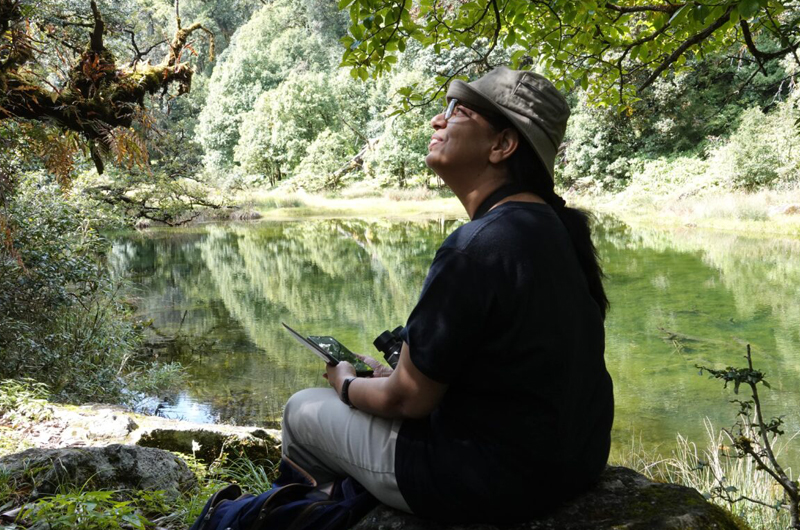
Shahabuddin says no two oak forests look the same. They have many tiers of complex vegetation. Banj oaks have leaves with silver underneath, and Tilonj oaks have twisted, convoluted boughs. The pine and oak trees look different and have different impacts on the ecosystem. Oaks germinate and thrive in moist areas and maintain soil moisture, often with streams emerging from these forests. She is excited by the diversity of these forests and the number of birds they harbour.
Oak forests are hotspots for biodiversity and birds. In a 2017 study with Rajkamal Goswami and Munish Gupta, she found 136 bird species from 42 sites in the mid-elevation Himalayas, around Mukteshwar. Another 80 species have been added by other team members – all unique to the ecological richness of these mountains. In many parts of the Himalayas, Shahabuddin found chir pine were invading oak stands. With people collecting biomass and other products, forests had degraded and the chir, which needs less water but more sun than the oak, established itself. Pine forests have less bird life than oak forests and are more susceptible to forest fires.
Among the many wonders of the oak forests is the Toona ciliata, a sub-tropical tree punctured artistically with holes made by the only sap-sucking woodpecker of Asia and one of the four sapsucker species in the world. The rufous-bellied woodpecker drills holes before drinking deeply. Shahabuddin’s intuition about wild spaces is as important as her scientific knowledge. She worries that the recession of the oak forests will impact birds like the rufus-bellied woodpecker. Since 2014, she has been setting up bird-based tourism for Uttarakhand youth.
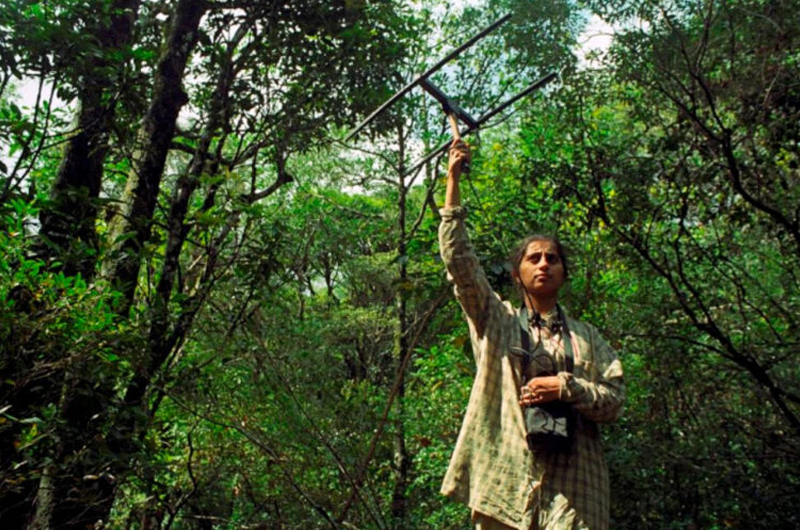
Divya Mudappa of the Nature Conservation Foundation’s Western Ghats programme tries to make life safer for the endangered macaques, giant Malabar squirrels, and other animals that live in the 220 sq km Valparai Plateau and are killed by speeding vehicles. In addition to physically signaling drivers to slow down, activists have put up sign boards, canopy crossings with ropes, old fire hoses, and rubberized tarpaulin so that these animals use the skyway instead of roads. This has had mixed success because many animals may prefer the road. Though the authorities have put speed breakers, road kills continue. Tying up with local companies like Parry Agro, Mudappa and her team have restored degraded forests with native trees, providing crucial corridors for birds, bees, and other wildlife transiting downslope.
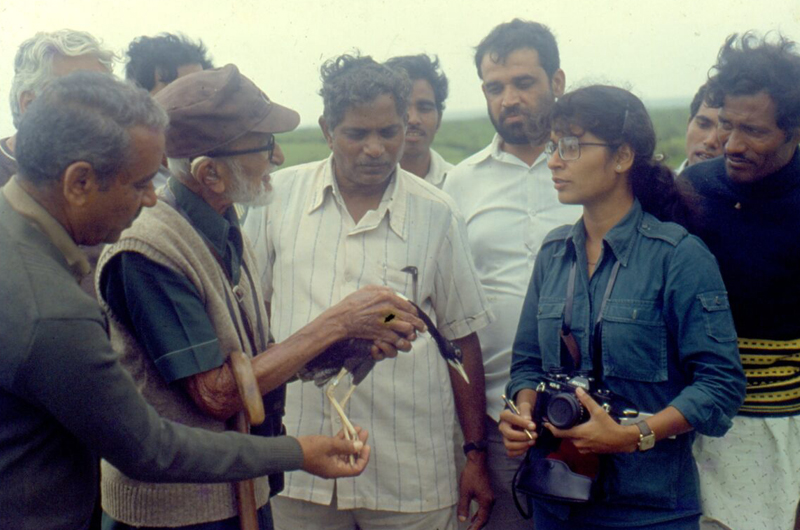
The women profiled in the book have worked in diverse landscapes, covering the Indian subcontinent. Nandini Velho and Usha Lachunga have worked extensively in the Eastern Himalayas, Ghazala Shahabuddin in the mid-elevation western Himalayas, and Divya Mudappa in the cool slopes of the southern Western Ghats. The biologists have a strong emotional connection to the landscape as well as the species they are helping conserve. The message that comes through strongly is that biodiversity conservation has to be in sync with local communities.
Women featured in the book have dealt with sexism from colleagues, seniors and local people. As Anita Mani points out they have gone through incidents from fending off men on lonely beaches at night to locking themselves in rooms in remote forest quarters to keep predatory officials at bay. Despite these hurdles, women biologists have made great strides. What is heartening is the crop of young women field biologists now coming forward for nature conservation.
(Courtesy: Mongabay-India/ india.mongabay.com. The writer is a veteran journalist. A recipient of the prestigious Chameli Devi Award, she was a pioneer in reporting on women’s issues, health, environment and development. She was assistant director of the Press Institute of India when it was in Delhi.)



 from Webdoux
from Webdoux